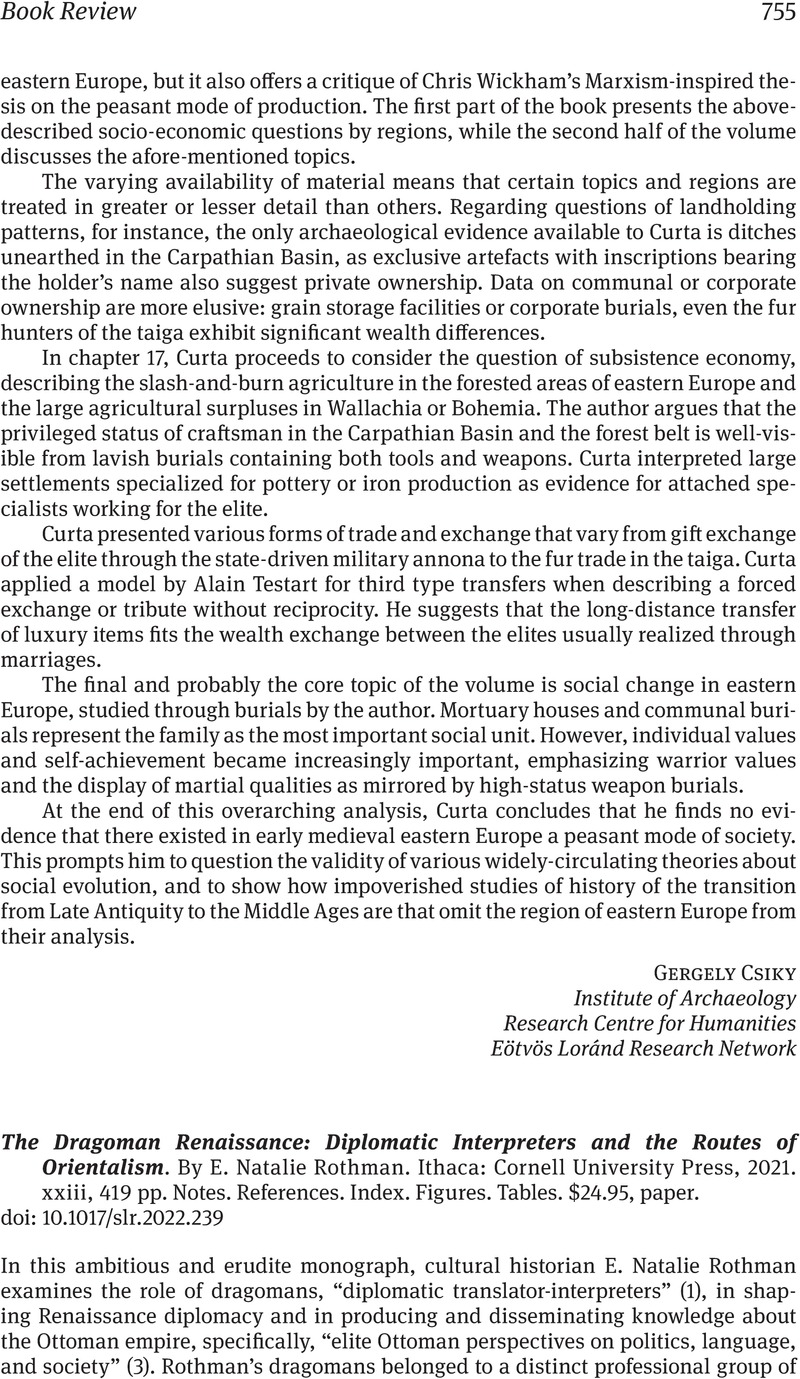No CrossRef data available.
Article contents
The Dragoman Renaissance: Diplomatic Interpreters and the Routes of Orientalism. By E. Natalie Rothman. Ithaca: Cornell University Press, 2021. xxiii, 419 pp. Notes. References. Index. Figures. Tables. $24.95, paper.
Review products
The Dragoman Renaissance: Diplomatic Interpreters and the Routes of Orientalism. By E. Natalie Rothman. Ithaca: Cornell University Press, 2021. xxiii, 419 pp. Notes. References. Index. Figures. Tables. $24.95, paper.
Published online by Cambridge University Press: 07 February 2023
Abstract
An abstract is not available for this content so a preview has been provided. Please use the Get access link above for information on how to access this content.

Information
- Type
- Book Review
- Information
- Copyright
- Copyright © The Author(s), 2023. Published by Cambridge University Press on behalf of the Association for Slavic, East European, and Eurasian Studies

